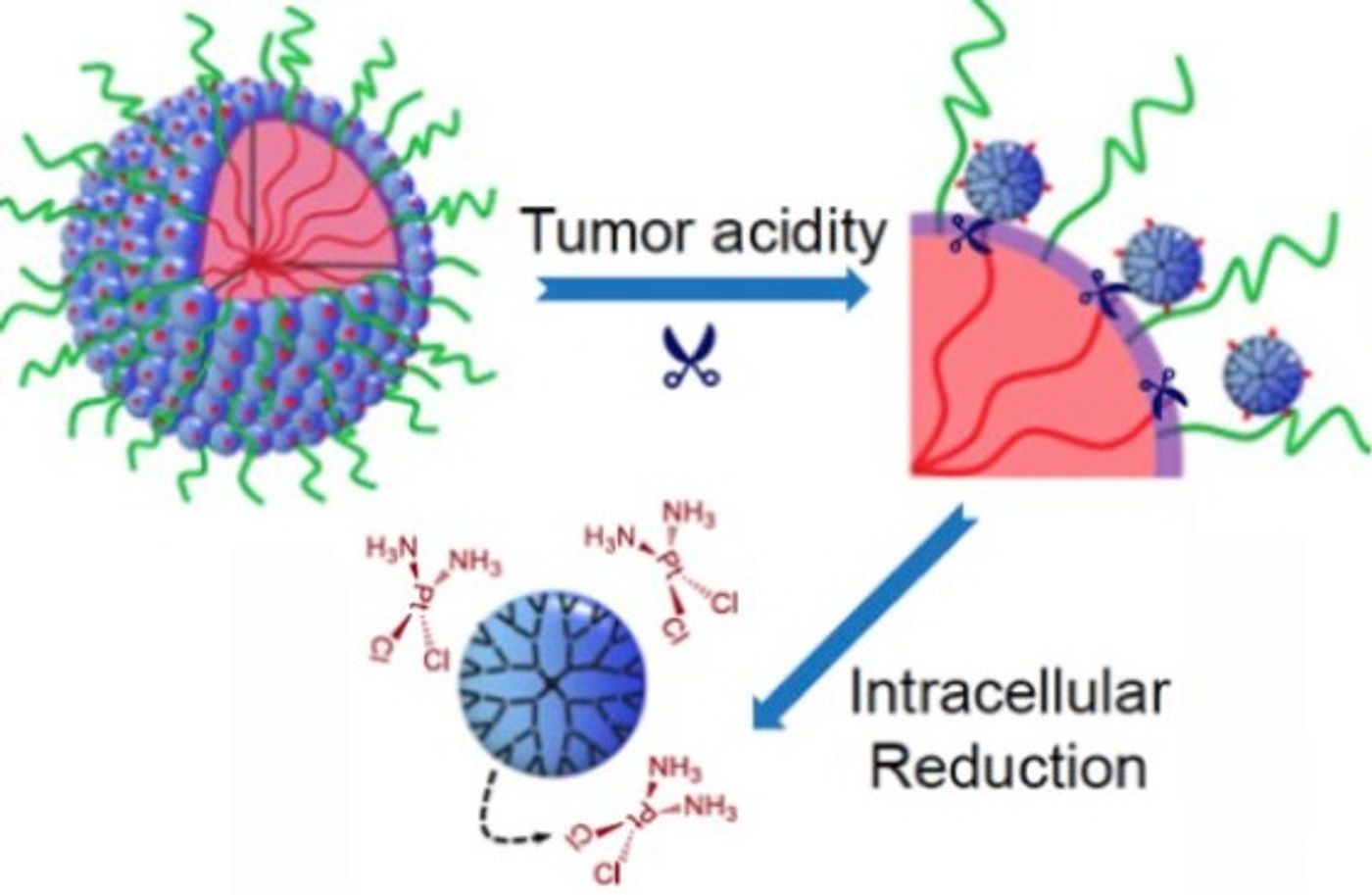In what sounds like a top-secret military operation, scientists have developed a
triple-stage “cluster bomb” to detonate the cancer enemy basecamp. The cluster bombs are smarter and respond to their stimuli in order to penetrate deeper inside the tumor and release cisplatin, a toxic drug with potent anticancer effects.
The triple-stage design was motivated by the need to target cisplatin into the tumor while incurring less collateral damages to the healthy cells. Cisplatin is a platinum-based drug that induces the DNA strands to cross-link, and thereby triggering cell death. Though a potent anticancer weapon, cisplatin has well-documented severe side effects, including kidney damage, nerve damage, and irreversible hearing loss. As such, finding a way to deliver cisplatin to the tumor while sparing healthy cells has been a long-awaited goal for cancer researchers.
The new nanoparticle bomb was developed for precisely this purpose by researchers from Emory University and their collaborators. In a clever design, the team created nanoparticles that are about 100 nanometers wide, which the researchers considered to be large enough to travel to the tumor site without getting caught in leaky blood vessels. Once close to the tumor, acidic conditions trigger the release of “bomblets” – smaller bombs about 5 nanometers wide, which can more effectively penetrate the actual tumor. In the third step of the triple-stage design, another chemical activates the cisplatin, detonating the bombs and allowing it to infiltrate the tumor cells.

"The negative side effects of cisplatin are a long-standing limitation for conventional chemotherapy," says Jinzhi Du, postdoctoral fellow at Emory and co-author of the study. "In our study, the delivery system was able to improve tumor penetration to reach more cancer cells, as well as release the drugs specifically inside cancer cells through their size-transition property."
In comparing doses of the smart cisplatin bombs to free-floating cisplatin, the researchers found several promising outcomes with the new design. First, they found higher levels of cisplatin with the nanoparticle delivery method in the tumors of a mouse model of human pancreatic cancer. This accumulation of drugs in the targeted tumor site offers hope of reduced damages to the surrounding healthy cells.
Then, in a cisplatin-resistant lung cancer mouse model, the cisplatin nanoparticles reduced tumor growth by 95 percent, compared to the 10 percent observed for free cisplatin doses. The nanoparticles also were effective against a model of invasive breast cancer, where the new delivery method prolonged animal survival by weeks. That cisplatin nanoparticle bombs were effective in three different tumor models is highly impressive, and offer hope that the system can be applied to many types of cancers.
Additional source:
Emory University press release









